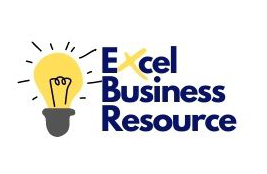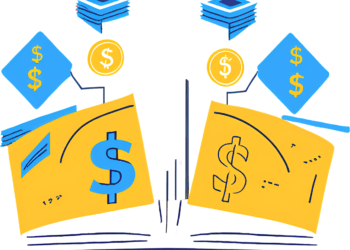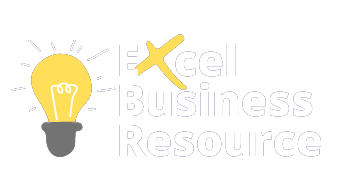No products in the cart.
Why Capital Efficiency Important for SaaS Growth & Valuation

You have built an amazing SaaS product. The customers are signing up, and your team is growing, and everything is going great, but when you scale, you find that the cash flow is starting to dry out. The revenues aren’t supporting your expenses anymore, and the investors are losing interest. It is a nightmare scenario for numerous SaaS startups, as they miss one key metric: capital efficiency.
Today, with the pace of the SaaS world fast and competitive with tight margins, capital efficiency is the secret sauce in terms of sustainable growth and attractive valuations. Dive deeper and understand why this metric matters so much to measure it, and how you can use it to scale your SaaS business and how to scale it.
Importance of Capital Efficiency for SaaS Growth?
Here’s the deal: SaaS businesses often use outside capital to fuel growth. Investors are looking for companies that make the most of this capital. A lousy capital efficiency burns money with no realization of revenue. For a good capital-efficient SaaS firm, the expenses are controlled whilst yields are strong.
Principal Reasons Capital Efficiency Determines SaaS Growth
- Scalability: The SaaS companies with high capital efficiency can scale sustainably without frequent cash injections.
- Investor Attractiveness: Capital-efficient companies are less risky and, therefore, more attractive to investors.
- Financial Health: Maintaining capital efficiency ensures that you have funds for emergencies or market shifts.
How to Measure Capital Efficiency
Capital efficiency is often measured using key metrics and formulas that give a snapshot of your financial performance. Let’s explore these.
Capital Efficiency Ratio
The capital efficiency ratio displays a company’s revenue in relation to the total amount of capital spent. The formula is as follows:
Total Revenue ÷ Total Capital Invested is the capital efficiency ratio.
For instance, your capital efficiency ratio is 2.5 if your SaaS business makes $5 million after spending $2 million. This indicates that for every $1 spent, you are making $2.50 in revenue.
Working Capital Efficiency
Capital efficiency is about how efficiently working capital is managed, which for the SaaS companies would then focus on cash flow management, minimize debt, and eliminate unnecessary expenses.
Capital Efficiency Calculation
Capital efficiency is not a formula but a mindset. In order to calculate it and improve it:
- Track metrics such as customer acquisition cost (CAC), customer lifetime value (CLTV), and churn rate.
- Identify and analyze trends of recurring revenue such as monthly recurring revenue (MRR) and annual recurring revenue (ARR).
- Make use of financial modeling tools, such as a SaaS Financial Model Template, a B2B SaaS Financial Model & Valuation Spreadsheet, or a B2C SaaS Financial Model Template.
Important Metrics Driving SaaS Capital Efficiency
1. The cost of acquiring customers (CAC)
CAC calculates the cost of acquiring a new client. You’re overspending on marketing and sales if your CAC is high. Effective SaaS providers maintain low CAC through focused advertising and high client retention.
2. Customer Lifetime Value (CLTV)
CLTV calculates the total revenue a customer will generate throughout their lifetime with your business. To optimize capital efficiency, work toward a high CLTV-to-CAC ratio, ideally 3:1 or better.
3. Churn Rate
Churn rate calculates the number of customers who discontinue using your service over a specified time frame. High churn rate hurts the revenue and capital efficiency of your business. Focus on reduction in churn by improving customer satisfaction.
4. MRR and ARR
It’s one of the very key recurring revenue metrics such as MRR and ARR. Here, one seeks to increase it without raising spending proportionately that, in turn, will lift capital efficiency.
The Role of Capital Efficiency in SaaS Valuation
SaaS companies are valued by investors mainly based on growth efficiency. One of the most used methodologies is the Rule of 40, which emphasizes on a SaaS firm’s revenue growth rate plus the profit margin equal to or more than 40%. Firms that record or surpass this threshold are deemed creditworthy, and more valuable.
Valuation Strategies:
- Use financial tools like B2B SaaS Financial Model & Valuation Spreadsheets to project growth and revenue.
- Highlight your capital efficiency ratio when pitching to investors.
- Showcase your SaaS Revenue Forecasting models to demonstrate sustainability.
Strategies to Enhance Capital Efficiency
1. Optimize Customer Acquisition
Customer acquisition is fundamental to capital efficiency since it is expensive and time-consuming to acquire new customers. Do customer profiling and segmentation that can help you to address the right people with the right message and make sure that the marketing dollars are spent with the right audiences that have complete the potential to change over their lifetime. Try Different SaaS Pricing Models to acquire your target market.
These models help customers appreciate what they gain at every price point ensuring the company attracts many clients while being profitable. A sound pricing strategy is needed not only to attract the right client base but also to make an investor-friendly proposal and demonstrate profitability and potential for expansion without excessive strain on resources.
2. Improve Customer Retention
However, the case of retention appeared to be a crucial aspect as it is to acquisition. The idea is to offer a good service, and keep on developing your product in a way that will fit the constantly changing needs of customers – so people will stick with you.
Providing potential clients with information on how to get the most out of a particular product through webinars, tutorials or support drastically decreases the churn-rate. High retention leads to better CLTV, which affects your capital efficiency ratio: creating value for your business from the customer’s and investor’s perspective.
3. Streamline Operations
Operational efficiency is key to reducing unnecessary costs. Use tools that can help you automate the tasks you do over and over again, and which fit well in your daily work processes.
For example, use SaaS Financial Model Templates to analyze your spending behavior and look for the issues. These cost reduction features do not only lower the operational costs, but they also enhance your usage of the resources, thus enhancing your Capital Efficiency Ratio.
4. Scale Infrastructure Wisely
Scalable infrastructure supports growth without ballooning costs, Invest in cloud solutions and technologies that grow alongside your business needs. Specifically, don’t waste resources on fixed assets in your early stages if you do not know if your product will really fit the market.
This affords an opportunity to scale, and at the same time manage your financial ratios with an eye on investors to remain as favorable as possible to enable you to make the right changes when the market signals so require.
Conclusion
It is not surprising that capital efficiency in the SaaS plays are more than just the number of efficiently used financial resources but the guidebook to the scalable growth trajectory. If you are a startup owner or have a growing business, by working towards capital efficiency, you can grow your business better, get a better valuation and be unique in the market.
To achieve this, start by understanding your numbers. B2C SaaS Financial Model Templates are right at your fingertips and the main targets to focus are churn rate decrease, CAC optimization, and high value of recurring revenue. Just because a business grows, however, does not necessarily mean that it prospers in the way it does so.
If capital efficiency was a buzzword in the world of SaaS it is your guide to the steady but sure success of your business.
Facebook
Twitter
LinkedIn
-
What is Rule of 40 in SaaS? A Guide to Balancing Growth and Profitability
The SaaS industry is a battlefield where growth and profitability often pull businesses in opposite directions. As a founder or leader, you’ve likely asked yourself, should I focus on scaling faster or turning a profit? It’s a tough call. One wrong move and you risk burning cash too quickly or losing your competitive edge.Here’s the
January 27, 2025 Read more -
Pre-Money vs Post-Money Valuation: Understand Startup Funding like a Pro
You’re pitching to a group of venture capitalists, excited about the prospect of raising capital to launch your dream company. They ask you, “What’s your valuation? Suddenly, you’re faced with questions about ownership percentages, equity stakes, and terms you may not fully understand. Perhaps the most frequent pitfall facing founders is the understanding of pre
January 27, 2025 Read more -
How to Increase Profitability in a Coworking Space Business
Running a coworking space is an exciting journey but making it profitable is not always easy. While you’ve created the space for freelancers, startups, and remote workers to thrive, balancing operational costs, member retention and revenue generation feels like juggling too many balls at once. What’s worse? You may be stretched thin with your human
January 21, 2025 Read more
-
What is Rule of 40 in SaaS? A Guide to Balancing Growth and Profitability
The SaaS industry is a battlefield where growth and profitability often pull businesses in opposite directions. As a founder or leader, you’ve likely asked yourself, should I focus on scaling faster or turning a profit? It’s a tough call. One wrong move and you risk burning cash too quickly or losing your competitive edge.Here’s the
January 27, 2025 Read more -
Pre-Money vs Post-Money Valuation: Understand Startup Funding like a Pro
You’re pitching to a group of venture capitalists, excited about the prospect of raising capital to launch your dream company. They ask you, “What’s your valuation? Suddenly, you’re faced with questions about ownership percentages, equity stakes, and terms you may not fully understand. Perhaps the most frequent pitfall facing founders is the understanding of pre
January 27, 2025 Read more -
How to Increase Profitability in a Coworking Space Business
Running a coworking space is an exciting journey but making it profitable is not always easy. While you’ve created the space for freelancers, startups, and remote workers to thrive, balancing operational costs, member retention and revenue generation feels like juggling too many balls at once. What’s worse? You may be stretched thin with your human
January 21, 2025 Read more -
Why Capital Efficiency Important for SaaS Growth & Valuation
You have built an amazing SaaS product. The customers are signing up, and your team is growing, and everything is going great, but when you scale, you find that the cash flow is starting to dry out. The revenues aren’t supporting your expenses anymore, and the investors are losing interest. It is a nightmare scenario
January 13, 2025 Read more
Services
Company
Join our NewsLetter
Join our newsletter for the latest updates, exclusive content, and more. Enter your email below and never miss out!





